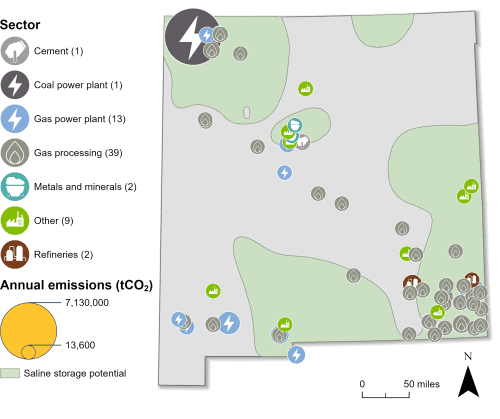New Mexico Carbon Capture Opportunities

The Permian Basin, which spans a large portion of New Mexico, is the world’s largest existing hub for CO2 capture, transport, utilization and geologic storage. The state is strategically positioned to further scale up carbon capture to sustain its prosperous energy sector while fulfilling the state’s commitment to decarbonization. This state has numerous sites for geological storage, existing CO2 pipeline infrastructure, and the proximity of power plants and industrial facilities to those pipelines. As the third largest crude oil producer in the US and with oil companies operating in the state that have extensive experience and expertise in enhanced oil recovery (EOR) and geologic storage of CO2, New Mexico is poised to take advantage of these strengths and harness the newly revamped federal 45Q tax credit to further deployment of carbon capture, pipeline infrastructure and geologic storage to meet its emissions reduction goals.

Qualified Industrial Facilities in New Mexico
The Regional Carbon Capture Deployment Initiative has identified industrial facilities in numerous states as early candidates for carbon capture retrofits. These facilities could qualify for the revamped federal 45Q tax credit for projects that capture carbon for geologic storage and beneficial use. Facilities were selected based on emissions, equipment, and estimated capture cost.

Economically Feasible Industries in New Mexico
The Regional Carbon Capture Deployment Initiative estimated theoretical capture costs based on published capture equipment costs, facility-specific operational patterns, existing equipment, and level of emissions. Based on that data, the graphic below displays several of New Mexico’s most likely economically feasible candidates for capture, along with estimated capturable emissions in million metric tons and estimated range of capture costs for facilities in each industry. This list is not meant to be definitive. Commercial decisions by participating companies and policy and regulatory decisions by state governments will ultimately determine if a project is feasible for carbon capture. “Captured Emissions” refers to the amount of CO<span style=”font-size: 50%;”>2</span> that can be expected to be captured at a facility considering relevant technological and economic constraints.


